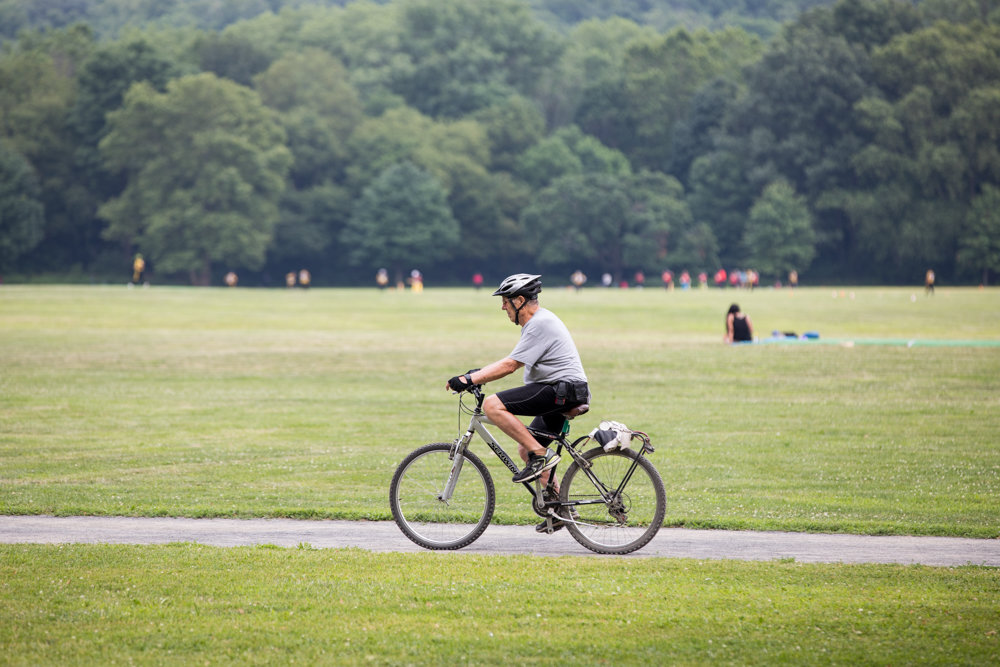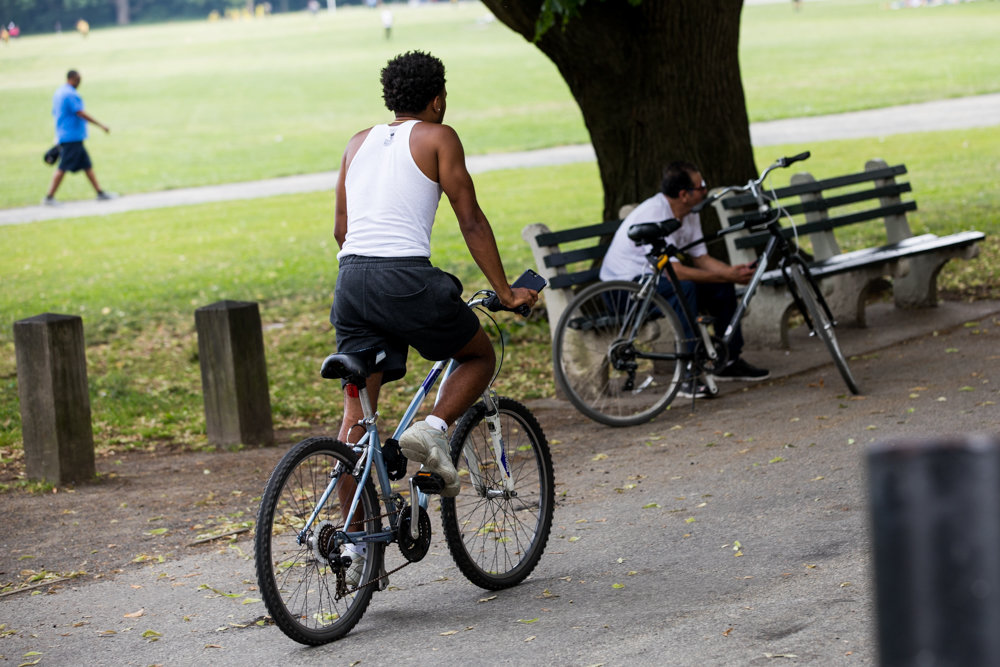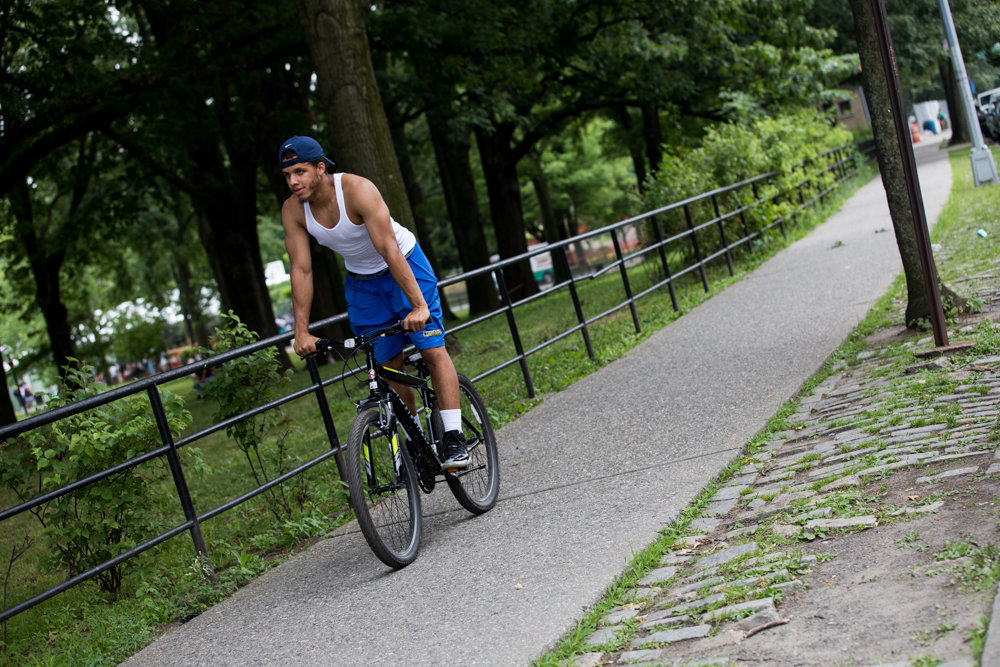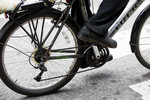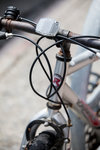Infrastructure, attitude at heart of cyclist safety
When a cement truck fatally struck a cyclist July 1 in Brooklyn, it marked the 15th bicycle rider to die this year on New York City streets — and the third that week. Soon after, Mayor Bill de Blasio and the New York Police Department vowed to curb reckless driving.
What followed, according to bike advocates, was a ticketing blitz that didn’t target drivers — it hit cyclists instead. Just a week after the Brooklyn accident, a police cruiser reportedly hit a man riding a Citi Bike on Avenue A in Manhattan’s East Village. He did so, according to reports, for the rider’s own safety after observing him running red lights.
After the image of the mangled bike lodged in the police cruiser’s rear wheel well went viral, even some non-cyclists began asking if this was the right way to approach bike safety.
“Every time anyone gets killed, they target cyclists,” said Susan Brenner, a Riverdale resident and bike activist with Transportation Alternatives. “They think we’re the problem, that we’re the ones that caused the crash. It’s like they go after us and don’t go after the motorists, and it doesn’t make any sense.”
Like a lot of cyclists in the outer boroughs, Brenner both drives and bikes where she needs to go.
“I’m not purely bike-centric,” she said. “I believe there has to be a balance in access for drivers, cyclists and pedestrians alike.”
Brenner also is an instructor for Bike New York along with fellow cyclist and Riverdalian Rich Conroy, the organization’s education director. They teach people how to ride, handle their bikes properly, safe road biking, and the applicable traffic laws cyclists must follow.
The city has made road biking safer through construction of bike lanes, but it falls short on enforcing traffic laws, Conroy said. Ticketing cyclists while ignoring vehicles is a misplaced strategy.
“Every time a cyclist has to maneuver around somebody who’s using (a) traffic lane or a bike lane as a parking spot, that’s a danger point for that person,” Conroy said.
Rule breakers aren’t just behind a wheel. Drivers, cyclists and pedestrians fudge the law at times, and it can have serious consequences. There needs to be a more open dialogue in the cycling community about “sketchy traffic behavior on the part of bicyclists,” Conroy said.
“You see drivers speeding, double-parking, paying attention to their cell phones,” Conroy said. “You see cyclists riding the wrong way, not using lights at night, running red lights, riding on the sidewalk. All of these are red flags. They’re opening themselves up for being ticketed, or worse.”
Educating drivers about how to share lanes with cyclists goes hand-in-hand with infrastructure improvements, Conroy said. Obeying the 25 mph speed limit, avoiding distractions, and giving cyclists a berth of at least five feet are major improvements.
Perhaps the most effective action actually takes place when the vehicle is parked on the street — a move called the “Dutch Reach.” When exiting a vehicle, drivers and passengers should open the door with their far hand, looking over their shoulder to ensure there’s not a bike approaching from the behind. It prevents cyclists from running into open vehicle doors.
“Car doors can open suddenly, and they’re very wide,” Conroy said. “The last thing you want to do is hit one.”
There’s no one reason why the number of fatalities has risen this year, already beating 2018’s total of 10 cyclist deaths — an all-time low. Brenner believes it’s because the city’s push for more bike lanes has made getting around town on two wheels more popular. Conroy theorizes that ride-hailing services like Uber dramatically increased the number of vehicles on the city’s streets. Vision Zero, de Blasio’s street safety initiative, may also have driven down fatalities last year, but seemly not had the same effect in 2019.
“I don’t know if anything is different so much as I think statistically we’re moving back toward the mean,” Councilman Andrew Cohen said. In 2017, the city had 24 cyclist deaths.
Bicycle safety is a multi-faceted problem. For the most part, the city’s roads are designed for cars. Cyclists are an afterthought, Cohen said. Streets are often too narrow to put a bus lane on one side and a two-way bike lane on the other.
“We live in a city that’s more than 400 years old,” the councilman said. “It was not really designed or built with bicycles in mind. Trying to retrofit it is an immense challenge.”
A solution most officials and advocates agree on is installation of bike lanes.
They clearly designate an area of the road for cyclists and deter motorists from encroaching on the needed space to safely ride. Cohen supported installation of the northwest Bronx’s first protected bike lanes last year on Broadway north of West 242nd Street. The lanes had the added perceived benefit of calming traffic on a street where 10 pedestrians died between 2010 and 2014.
But any time transportation officials suggest putting in bike lanes, there’s a public outcry from motorists who feel bikes will impede traffic flow and swallow up premium parking by narrowing streets, Cohen said. The car culture persists here because residents have little options if they want to travel west to east because most transit routes run south to Manhattan.
Many of those opposed to more bike lanes believe there aren’t enough bike riders in the northwest Bronx to justify their construction. But Brenner says there are plenty of cyclists now and will be more when they have access to more designated travel lanes.
“We’re here,” Brenner said. “People say they never see anybody in the bike lane, but that’s because we have the ability to get through traffic faster than an automobile. There are a lot of us in the Bronx — especially up in Riverdale — that cycle.”
There are no panaceas that will unite drivers and cyclists without compromise, Cohen said. They are different constituencies with different priorities, and they must find a middle ground to make progress.
Cohen: “There’s just no substitution for coalition-building on these issues.”

